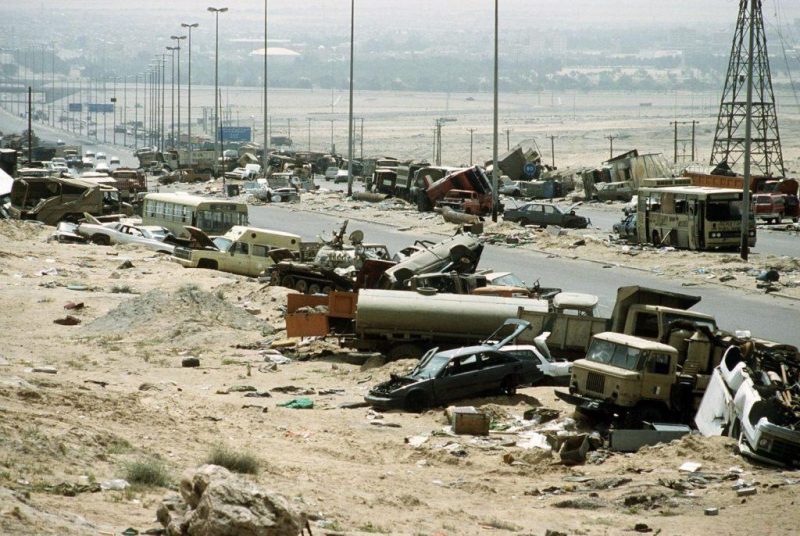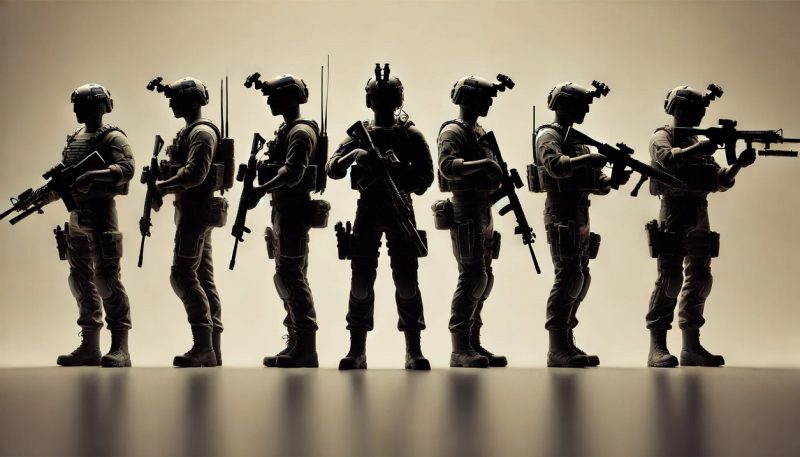The United States Air Force Special Reconnaissance (SR) is a highly skilled and capable unit that is considered to be one of the best in the military. Compared to other elite units such as Delta Force or SEAL Team 6, SR stands out for its capability to provide vital on-the-ground weather reporting to special operations units.
History
The U.S. Army Weather Service was established in 1917 to provide the American Expeditionary Forces with all necessary meteorological information, and to conduct special investigations in military meteorology and related issues. They took part in World War I combat operations in France in 1918, as part of the Army’s Signal Corps. During World War II, specially trained weather observers, sometimes referred to as guerrilla weathermen, were sent behind enemy lines to gather intelligence to support airstrikes, airlifts, and airdrops. Since the Vietnam War, special operations weathermen have participated in the majority of special operations missions, conducting austere environmental reconnaissance operations, and setting conditions that were critical to the success of follow-on forces.
On May 5, 2008, the Air Force established a new Air Force Specialty Code for Special Operations Weather Teams (SOWT) to formally recognize the need for a special reconnaissance capability that was uniquely trained to conduct weather operations and to collect and analyze environmental reconnaissance. These operators have since been an integral part of Special Tactics, able to conduct multi-domain reconnaissance and surveillance across the spectrum of conflict and crisis.
In 2016, Headquarters Air Force and Air Force Special Operations Command (AFSOC) recognized the need to critically examine the entire formation. Recognizing the Air Force’s challenges in an era of great power competition, the evolution of Special Tactics teams began.
On April 30, 2019, SOWT transitioned to Special Reconnaissance, expanding the capabilities and lethality of Air Force Special Tactics. SR will continue to maintain their application of lethal and non-lethal air-to-ground integration of airpower. Additionally, they will focus their primary skillset on reconnaissance – long cultivated within their community – into a multi-domain, tactical capability able to provide battlespace awareness, and generate effects of strategic and operational significance.
The unit, which was previously known as the Special Operations Weather Team (SOWT), has undergone a rebranding to reflect its new mission and role in the Air Force. As per the Air Force Times, the renaming of the unit is a part of the Air Force’s effort to enhance the capabilities of its Special Tactics teams, which include combat control, pararescue, and tactical air control party airmen.
This is in line with the current era of great power competition, where the Air Force needs to ensure that its units are well-equipped and ready to face any challenges. This rebranding reflects the unit’s evolving role and mission, which now includes a greater focus on reconnaissance and multi-domain capabilities, in addition to its traditional weather operations.
Mission
The Special Reconnaissance (SR) unit is composed of highly trained Airmen, who possess a unique set of skills and qualifications. These Airmen are typically meteorologists with additional training that enables them to operate tactically while attached to other special operations units or independently. The SR Airmen provide real-time local weather forecasting, but they also can provide target and in-route weather information and assist in route planning for US Air Force units and other service assets. They operate under the 10th Combat Weather Squadron, which is based at Hurlburt Field and falls under the Air Force Special Operations Command.
The United States Air Force Special Reconnaissance Airmen are trained to operate in hostile or denied territory, which often means that they are deployed to some of the most dangerous places in the world. They gather, assess, interpret environmental data, and forecast operational impacts from forward-deployed locations. They primarily work with Air Force and U.S. Army Special Forces. However, they can also be attached to Marine MARSOC and Navy SEAL teams to collect weather, ocean, river, snow, and terrain intelligence, assist in mission planning, generate accurate mission-tailored target and route forecasts in support of global special operations, and train joint force members and coalition partners to take and communicate limited weather observations.
They operate in 2-3-man Environmental Reconnaissance Teams (ERT) which are attached to 8-9-man Special Tactics Teams (STT) alongside Combat Control (CCT) and Pararescue (PJ) personnel. Together, they provide SOCOM (Special Operations Command) with a unique capability to establish and control austere airfields in permissive and non-permissive environments.
In addition to their primary role, SR operators also conduct special environmental reconnaissance, collect upper air data, organize, establish, and maintain weather data reporting networks, determine host nation meteorological capabilities, and train foreign national forces. Special Operations Forces missions are planned using the analyses and coordination of special operations weathermen.
Training and selection
The United States Air Force Special Reconnaissance Airmen are among the most highly trained personnel in the U.S. military forces. They possess and maintain the same weather weapon system qualifications as all Air Force weathermen, in addition to advanced special tactics skills which allow them to execute any mission they are assigned with. They have undergone a rigorous 61 weeks of training, that has equipped them with the unique mission skills that earned them the right to wear the gray beret.
Ininital fitness test (IFT)
- 8 pull-ups in under 2 minutes
- 50 sit-ups in under 2 minutes
- 40 push-ups in under 2 minutes
- 1.5 mile run under 10 min 20 sec
- 2×25 Underwater Swim (pass/fail)
- 500m Surface Swim under 12 min 30-sec

United States Air Force Special Reconnaissance (SR) selection and training have one of the highest attrition rates among US Special Operations Forces (SOF), with a rate of around 93%. The process of becoming a Special Reconnaissance operator involves several initial training courses that candidates must complete in chronological order:
- USAF Basic Military Training (BMT) at Lackland Air Force Base, Texas (8 weeks): The first course in the Air Force for all non-prior service enlisted personnel. This is where candidates will learn how to be an Airman and the basics of the USAF. Special Warfare candidates will meet with the cadre every week to perform pre-programmed exercises to optimize their performance for the pipeline. SW candidates will make their first impressions on the instructors as well as on their future teammates.
- Special Warfare Preparatory Course (SW PREP) at Lackland Air Force Base, Texas (8 weeks): SW PREP is designed to give the candidates the best possible chance of getting through the selection. Collegiate-level strength/conditioning coaches, running coaches, swimming coaches, nutritionists, and physical therapists, among other specialties, use their combined expertise to maximize the candidates’ level of fitness and prepare them for the rigors of selection, both mentally and physically. Candidates will be exposed to sleep deprivation, extended training days, and the importance of performing as a team.
- Special Warfare Assessment and Selection (SW A&S) at Lackland Air Force Base, Texas (4 weeks): During the entire length of the A&S, candidates will be thoroughly evaluated by both the psychologists and cadre in extremely demanding scenarios. A&S is divided into 2 segments: The field Phase and the Selection Phase. Field Phase (2.5 weeks): Candidates can expect to be in a field-like setting, sleeping in makeshift lodging in cots with sleeping bags. Training is continuous with zero down days, often experiencing continuous sleep deprivation. Selection Phase (1.5 weeks): Following the field phase, candidates will begin to clean up the facilities and will be administered academic and psychological tests, surveys, critiques, and interviews. Instructors will compile all relevant information and select only candidates that meet the desired career field attributes.
- Special Warfare Pre-Dive (SW Pre-Dive) at Lackland Air Force Base, Texas (4 weeks): This is a course designed to prepare the candidates for Special Warfare Combat Dive school. Candidates will be subjected to more technical and difficult water confidence training. As of mid-2019, this course eliminated up to 30% of the A&S graduates.
- Special Warfare Combat Dive Course at NDSTC, Panama City, Florida (8 weeks): Candidates will become combat divers, learning to use scuba and closed-circuit diving equipment to covertly infiltrate denied areas. The course is divided into two phases of training: open circuit and closed circuit. Students will learn basic diving and advanced rescue diving principles during the open circuit (SCUBA) portion of the training. Next, students will learn advanced combat diving fundamentals during the closed circuit (UBA) portion of the training. Upon completion of training, the student will be a certified SOCOM-approved combatant diver.
- U.S. Army Airborne School at Fort Benning, Georgia (3 weeks): Airborne school teaches basic parachuting skills required to infiltrate an objective area by static line airdrop. This course includes ground operations week, tower week, and jump week where students will make 5 parachute jumps. Candidates will be awarded the basic parachutist rating upon graduation.
- Military Freefall School at Yuma Proving Ground, Arizona (4 weeks): Week one of the four-week course focuses on vertical wind tunnel body stabilization and parachute packing, week two focuses on parachute jumps from high altitude and freefall techniques, week three focuses on advanced freefall maneuvers and equipment, and week four includes a final evaluation jump. Upon completion of this course, candidates will be awarded the Military Freefall Parachutist rating.
Please note that the aforementioned training courses are just an overview of the initial training that candidates will have to go through to become a Special Reconnaissance operator. The actual training pipeline may vary depending on the specific needs of the unit and the progress of the individual candidate.
Status in SOF community
The Air Force refers to all its ground elements as Battlefield Airmen (BA). This designation includes both the Special Operations career fields of AFSOC (Air Force Special Operations Command) – Pararescue (PJ), Combat Control (CCT), Special Reconnaissance (SR), and Tactical Air Control Party (TACP) – but also other career fields that often train and support AFSOC elements. These include the Explosive Ordnance Disposal (EOD), Survival Evasion Resistance Escape (SERE), and Security Forces (SF) career fields. However, it should be noted that a major overhaul of the SOF career fields is currently underway.







